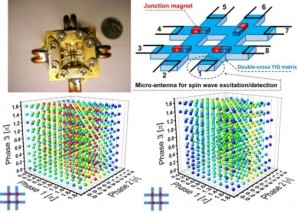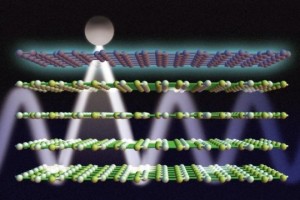Nano memory cell can mimic the brain’s long-term memory
RMIT University researchers have mimicked the way the human brain processes information with the development of an electronic long-term memory cell.
Researchers at the MicroNano Research Facility (MNRF) have built the one of the world’s first electronic multi-state memory cell which mirrors the brain’s ability to simultaneously process and store multiple strands of information.
The development brings them closer to imitating key electronic aspects of the human brain — a vital step towards creating a bionic brain — which could help unlock successful treatments for common neurological conditions such as Alzheimer’s and Parkinson’s diseases.
The discovery was recently published in the materials science journalAdvanced Functional Materials.
Project leader Dr Sharath Sriram, co-leader of the RMIT Functional Materials and Microsystems Research Group, said the ground-breaking development imitates the way the brain uses long-term memory.
“This is the closest we have come to creating a brain-like system with memory that learns and stores analog information and is quick at retrieving this stored information,” Dr Sharath said.
“The human brain is an extremely complex analog computer… its evolution is based on its previous experiences, and up until now this functionality has not been able to be adequately reproduced with digital technology.”
The ability to create highly dense and ultra-fast analog memory cells paves the way for imitating highly sophisticated biological neural networks, he said.
The research builds on RMIT’s previous discovery where ultra-fast nano-scale memories were developed using a functional oxide material in the form of an ultra-thin film — 10,000 times thinner than a human hair.
Dr Hussein Nili, lead author of the study, said: “This new discovery is significant as it allows the multi-state cell to store and process information in the very same way that the brain does.
“Think of an old camera which could only take pictures in black and white. The same analogy applies here, rather than just black and white memories we now have memories in full color with shade, light and texture, it is a major step.”
While these new devices are able to store much more information than conventional digital memories (which store just 0s and 1s), it is their brain-like ability to remember and retain previous information that is exciting.
“We have now introduced controlled faults or defects in the oxide material along with the addition of metallic atoms, which unleashes the full potential of the ‘memristive’ effect — where the memory element’s behaviour is dependent on its past experiences,” Dr Nili said.
Nano-scale memories are precursors to the storage components of the complex artificial intelligence network needed to develop a bionic brain.
Dr Nili said the research had myriad practical applications including the potential for scientists to replicate the human brain outside of the body — which would remove the ethical barriers involved in experimenting on humans.
“If you could replicate a brain outside the body, it would minimise ethical issues involved in treating and experimenting on the brain which can lead to better understanding of neurological conditions,” Dr Nili said.
The research, supported by the Australian Research Council, was conducted in collaboration with the University of California Santa Barbara.



